

Galzuur als versiertruc. How the Clouds Got Their Names. By Maria Popova “Clouds are thoughts without words,” the poet Mark Strand wrote in his breathtaking celebration of the skies.
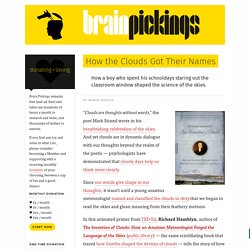
And yet clouds are in dynamic dialogue with our thoughts beyond the realm of the poetic — psychologists have demonstrated that cloudy days help us think more clearly. Since our words give shape to our thoughts, it wasn’t until a young amateur meteorologist named and classified the clouds in 1803 that we began to read the skies and glean meaning from their feathery motions. Growing mushrooms in a laundry basket. August 12, 2012 | Growing, Mushroom Cultivation, Mushrooms | 37 Comments | Author: Kirsten Bradley Thought you might like to see a great way to grow mushrooms outdoors if you have a shady place that gets watered regularly… This technique also works indoors, but the laundry basket is usually bagged or boxed until the straw is completely colonised with mycelium.
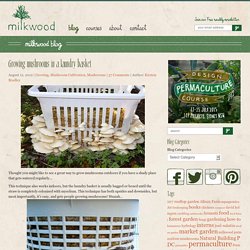
Teguidda5 – Fubiz Media. Are plants intelligent? New book says yes. Plants are intelligent.
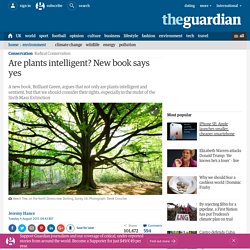
Plants deserve rights. Plants are like the Internet – or more accurately the Internet is like plants. To most of us these statements may sound, at best, insupportable or, at worst, crazy. But a new book, Brilliant Green: the Surprising History and Science of Plant Intelligence, by plant neurobiologist (yes, plant neurobiologist), Stefano Mancuso and journalist, Alessandra Viola, makes a compelling and fascinating case not only for plant sentience and smarts, but also plant rights.
For centuries Western philosophy and science largely viewed animals as unthinking automatons, simple slaves to instinct. “Today’s view of intelligence - as the product of brain in the same way that urine is of the kidneys - is a huge oversimplification. As radical as Mancuso’s ideas may seem, he’s actually in good company. Plant problem solvers Plants face many of the same problems as animals, though they differ significantly in their approach.
Humans have five basic senses. Honingbijen Amsterdam. Kaartnavigatie - Klik op een kaartobject voor informatie over dat object. - Dubbelklik op de kaart om stapsgewijs in te zoomen, of - Gebruik het muiswiel of de controlbar voor in- en uitzoomen. - Houdt de (linker)muisknop ingedrukt of gebruik de controlbar om het kaartbeeld te verschuiven. - Streetview is beschikbaar via de controlbar (gele poppetje op de kaart leggen). - Kies rechts bovenin een topografische ondergrond in verschillende kleuren of de luchtfoto. - Met het knopje rechtsboven tekent u zelf een gebied, waarin de objecten worden geteld.
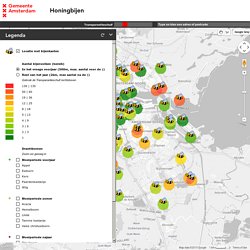
Over maps.Amsterdam.nl De website maps.amsterdam.nl wordt beheerd door de afdeling Ruimte en Duurzaamheid van de Gemeente Amsterdam. Colorful Sculptures Reveal the Devastating Volume of Plastics Washed Ashore in Sian Ka’an, Mexico. Along the lush banks of Sian Ka’an reserve in Mexico, Brooklyn-based photographer Alejandro Durán has discovered heaps of plastic refuse originating from more than fifty countries and all six human-inhabited continents.
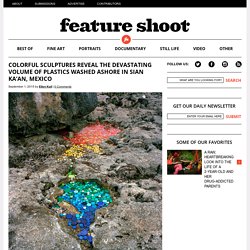
For Washed Up, he culls large volumes of waste from the shores, constructing site-specific installations in which trash can be seen literally encroaching upon the delicate ecosystem. Sian Ka’an, named for the Mayan words for “Origin of the Sky,” is a sanctuary not only for dozens of archeological sites but also for an astonishing array of terrestrial, avian, and marine plants and animals, including one of the planet’s most valuable barrier reef systems. Although the coastal region is protected as UNESCO World Heritage site, it is ravaged by staggering amounts of garbage, carried to across continents the backs of ocean waves.
Permacultuur. Inleiding.

Permacultuur is een vertaling van het Australische woord „permaculture‟. Permaculture is een samengesteld begrip van Permanent Agriculture en Permanent Culture. Bumblebees Have A New Job: Delivering Organic Pesticides. The humble bumblebee might help disrupt the multi-billion dollar synthetic pesticide industry.
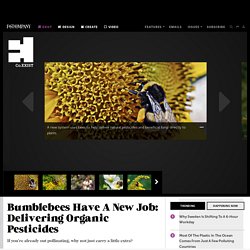
A new system uses bees to help deliver natural pesticides and beneficial fungi directly to plants—and because bees are so much more precise than the typical sprayers on farms, they can use a tiny fraction of the pesticide and make plants stronger. "Imagine you have an apple orchard," says Michael Collinson, president and CEO of Bee Vectoring Technology, the Vancouver-based startup behind the technology. "Because apple trees have a very large canopy, even though you may spray it and use a special type of spray that doesn't go everywhere, you still won't touch every bloom. Whereas the bees deliver product every single day, to every single bloom. " The new system, originally developed by researchers at the University of Guelph, uses a tray filled with a patented mix of natural, beneficial microbes. 2015 October 18 - Mammatus Clouds Over Saskatchewan.
Discover the cosmos!
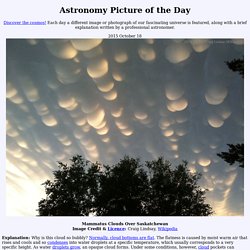
Each day a different image or photograph of our fascinating universe is featured, along with a brief explanation written by a professional astronomer. 2015 October 18 Mammatus Clouds Over Saskatchewan Image Credit & Licence: Craig Lindsay, Wikipedia Tomorrow's picture: southern cross sky. Jellyfish Fascinating Photography Series. Human evolution is more a muddy delta than a branchi... Until recently, anthropologists drew the human family tree in the same way that my 10-year-old son solves a maze.

He finds it much easier to work from the end to the beginning, because blind alleys lead with depressing sameness away from the start. In just this way, scientists once traced our own lineage from the present into the past, moving backward through a thicket of fossil relatives, each perched upon its own special branch to extinction. This approach yielded the now-ubiquitous image of the human family tree, with Homo sapiens – the one and only living hominid – sitting alone, seemingly inevitable, at the top.